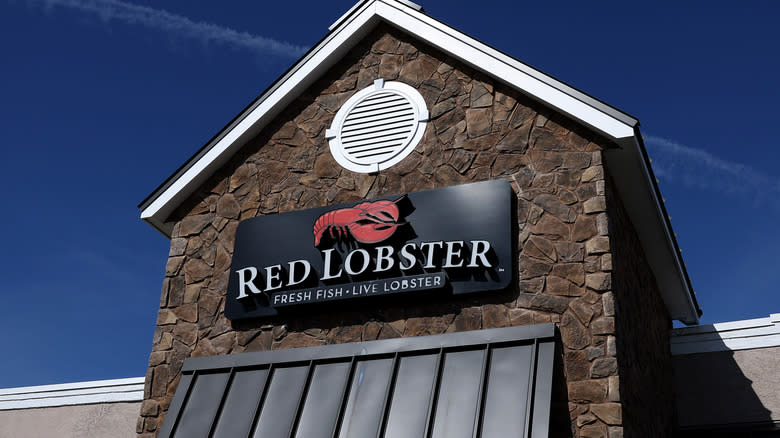Red Lobster Faces More Than 100 Possible Closures Due To Leasing Issues

It appears Red Lobster's financial woes are far from over. Following a pileup of unpaid bills and millions in company losses, the world's largest seafood restaurant chain filed for Chapter 11 bankruptcy on May 19. Just days before, the company abruptly closed dozens of its locations across the United States. Now, according to new reports, Red Lobster could be facing the shuttering of more than 100 more outposts if the company is unable to work out its leasing issues.
Per Restaurant Business Online, the recent bankruptcy filings by Red Lobster listed more than 230 rejected leases on restaurant locations that the company has deemed to be pure money drains due to high rent prices. As nearly 100 of those locales have already closed their doors in the past month, that could mean around 130 more are set for the chopping block, including the popular outpost in New York City's Time Square, which has operated in the same spot for over two decades.
As the New York Post recently reported, the company has been trying to negotiate with the property's landlords as they seek to raise the restaurant's annual rent by more than double what it was previously. Indeed, Red Lobster's current CEO expressed that "a material portion of the company's leases are priced above market rates" in the bankruptcy filing, which also said that the company's rents clocked in at $200 million a year (per NBC News). That amounts to roughly 10% of Red Lobster's revenues.
Read more: 19 Popular Pizza Chains, Ranked From Worst To Best
Private-Equity Asset-Stripping May Have Been Red Lobster's Downfall

In addition to the highly publicized losses incurred by higher-ups' decision to make endless shrimp a permanent menu option last June, industry-wide challenges like inflation, rising food costs, and the lingering effects of the Covid-19 pandemic have surely all played a part in causing the chain's current predicament. However, when it comes to the leasing issues in particular that Red Lobster is facing, many experts have pointed to the detrimental role of the sale-leaseback transactions led by private-equity firm Golden Gate Capital, which purchased the seafood chain back in 2014 and had a stake in it until 2020.
Throughout the firm's ownership, the seafood chain underwent a common private-equity practice known as asset-stripping, in which the new owners or investors sell off company assets, like real estate, for a profit. Rarely, however, does it benefit the company itself. In Red Lobster's case, that involved selling the land lots owned by the company to an outside investor, who then leased back the real estate to the company, so its restaurants could continue operating in the same locations. Afterwards, the outposts were at the whim of their new landlord and had to deal with regular rent hikes, significantly cutting into profits and landing the chain where it is now. If those additional costly lease locations listed in the filing can't be negotiated to lower rent prices, the shuttering of more eateries seems unavoidable.
Read the original article on Tasting Table

 Yahoo Finance
Yahoo Finance 